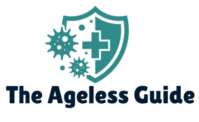It is startling to learn that each year, older adults are swindled out of more than $36 billion through various scams. This immense figure makes it clear that strong financial planning for healthy aging is not just a good idea; it is an absolute necessity. The strategies we used when younger often become inadequate as we advance in age. From my own experience, careful financial planning for healthy aging offers peace of mind and real financial stability during retirement. This involves more than simply having enough money. It also means preparing for health needs, sustaining your desired lifestyle and creating a legacy.

From what I have seen, ignoring this important area can create needless worry and limit what you can do. Consider this a guide to help make sense of financial planning for healthy aging. I will discuss retirement approaches, handling medical expenses and investment ideas suited for older adults. Let us begin building your safe future now.
Financial tactics for your later years include more than simple retirement savings. You need to understand the specific challenges and possibilities that come with age and develop plans to handle them well. Here are the main parts to think about.
Get the insider’s guide to Best Protein Powders for Seniors here.
Key Elements of Financial Planning for Healthy Aging
- Retirement Planning: Figure out your retirement income, find your income sources like Social Security, pensions and investments and take care of any gaps.
- Senior Finances: Handle daily costs, budget carefully and make smart financial choices for healthy aging.
- Healthcare Costs: Learn about your health coverage choices including Medicare, supplemental insurance and long term care insurance and plan for what you will pay out of pocket. Healthcare costs are a big part of financial planning for healthy aging.
- Investment Strategies: Change your portfolio as you get older, balancing income and growth while lowering risk.
Overlooking even one of these parts can have big effects. To illustrate, if you underestimate what healthcare will cost, you might face unexpected bills that drain your savings. Also, if you do not change your investment approach, you could be taking on needless risk. A full plan makes sure all areas are covered, which builds a solid base for a safe and rewarding future.
While planning helps at any point, beginning early sets you up to do even better. When you plan early, you get to benefit from compounding, which can greatly raise your investment returns over time. You also have more time to change your strategies based on changes in your life or the economy. Beginning early gives huge advantages in financial planning for healthy aging.
I recall a time I worked with Sarah, who began saving for retirement when in her early twenties. By the time she reached her sixties, she had a large nest egg, which allowed her to retire comfortably and pursue what she loved. I have also worked with people who put off planning until their fifties. They had a harder time reaching their retirement goals. They still managed a safe retirement, but they had to sacrifice more and work harder to get there.
Get the insider’s guide to Sleep and Healthy Aging here.
Retirement Planning: The Cornerstone of Financial Strategies

Retirement planning serves as a base for financial tactics in your later years. It is more than simply collecting wealth; it also means making a lasting income stream to support you during retirement. This calls for carefully looking at your costs, income sources and possible risks.
The first thing you need to do in retirement planning is figure out how much income you will need to cover costs. This may be hard because your costs can change a lot during retirement. As an example, you might spend less on commuting and work costs but spend more on healthcare and fun.
A smart way to start is by tracking your current costs for a few months. Then, change them to show how you expect to live in retirement. Consider items such as:
- Housing costs: Will you keep paying a mortgage, or will you own your home outright?
- Healthcare costs: How much should you set aside for health insurance, doctor visits and medicines?
- Food and transportation: Will you eat out more or cook at home? Will you need a car?
- Leisure activities: How much will you spend on trips, hobbies and entertainment?
- Taxes: How will your tax requirements change in retirement?
After you generally know your costs, add more to cover unforeseen costs. It is always best to overestimate what you will need.
Don’t buy Books on Healthy Aging before reading this guide.
The next thing you need to do is find your retirement income sources. These can include:
- Social Security: Most Americans can count on this guaranteed income source. The amount you get relies on your earnings history and the age at which you start receiving benefits.
- Pensions: If you worked for a company that offered a pension plan, you might receive monthly payments during retirement.
- Retirement accounts: These involve 401(k)s, IRAs and other savings plans that give you tax advantages. How much you can take out of these accounts depends on what you put in, how the investments performed and withdrawal rules.
- Investments: If you have investments outside retirement accounts like stocks, bonds or real estate, you can use them to make income during retirement.
- Part time work: Some retirees choose to work part time to add to their income and stay active.
Knowing the rules and limits related to each income source is very important. For example, Social Security benefits can be lowered if you claim them before your full retirement age. Also, retirement account withdrawals might have taxes and penalties. Part time work could affect your Social Security benefits.
After you figure out your costs and find your income sources, see if you are short on funds. If you are, create a plan to make up the difference. This might mean:
- Saving more: If you still have a job, put more into your retirement accounts.
- Postponing retirement: Working a few more years can greatly raise your retirement savings and lower the number of years you will need to take money out.
- Lowering costs: Spend less to lower how much income you need.
- Changing your investment strategy: Make more income from your investments by switching to a portfolio that focuses more on income.
- Buying an annuity: An annuity is a contract with an insurance company that promises a stream of income for life.
Carefully think about the good and bad of each choice before you decide. What works for one person might not work for another. Advice that is made for you is key.
See today’s best price on ZzzQuil Pure Zzzs + Magnesium here.
Managing Daily Spending: A Key Aspect of Senior Finances

Handling daily spending is a key part of financial tactics for your later years. It means making smart financial choices and budgeting carefully to make sure you have enough money to pay for what you need and want. I often see that even a little planning can make your financial health much better.
A budget is a plan for how you will spend your money. It helps you track income and costs, find areas where you can save and make sure you do not spend more than you earn. To make a budget, do these things:
- Track your income: List all income sources like Social Security, pensions, retirement account withdrawals and part time work.
- Track your costs: List all costs like housing, healthcare, food, transportation and fun.
- Categorize your costs: Group costs into groups like fixed costs, which stay the same each month and variable costs, which change.
- Compare your income and costs: Subtract total costs from total income. If you earn more than you spend, you are in a good place. If you spend more than you earn, make changes.
- Make changes: Find areas where you can lower costs. This might mean cutting costs that are not important, finding cheaper choices or talking to get lower prices.
- Review and change your budget often: Your budget needs to change as your income and costs change.
Click here to see the latest deals and reviews for Nature’s Truth Melatonin 5 mg | 180 Fast Dissolve Tablets.
As an older adult, you will face many financial decisions such as:
- Whether to make your home smaller: Making your home smaller frees up money to pay for retirement. This includes emotional thoughts like leaving a home where you have lived for a long time.
- Whether to buy long term care insurance: Long term care insurance helps pay for costs for nursing homes, assisted living or care at home. It can be costly and might not be needed if you have other long term care resources.
- How to handle your investments: As you get older, your investment goals and how much risk you can handle change. Change your portfolio as needed, focusing on ways to balance income and growth while lowering risk.
- How to keep yourself safe from fraud and scams: Older adults are often targets for fraud and scams. Be aware of warning signs and take steps to keep yourself safe.
Before you make any big financial decisions, get advice from a skilled financial advisor. They can look at your situation, explain your choices and help you make smart choices that are best for you.
Financial abuse is a big problem that affects many older adults. It occurs when someone uses an older person’s money for their own gain. This can include:
- Taking money or property
- Using an older person’s credit card without permission
- Pressuring an older person to sign legal papers
- Keeping an older person away from their friends and family
- Not giving enough care or support
If you think you or someone you know is a victim of financial abuse, do something. Contact your local Adult Protective Services agency, law enforcement or a skilled attorney.
Anticipating Healthcare Costs: A Major Consideration

Healthcare costs are a big worry for older adults and have a big effect on your financial tactics for your later years. You need to know your health coverage choices and plan for costs you might pay out of pocket. Unexpected medical bills are a main cause of financial problems for retirees. This is a key part of financial planning for healthy aging.
As an older adult, you have a few health coverage choices including:
- Medicare: This federal health insurance program is for people who are 65 and older and some younger people with disabilities. Medicare has parts such as Part A (hospital insurance), Part B (medical insurance), Part C (Medicare Advantage) and Part D (prescription drug insurance).
- Medicaid: This joint federal and state program gives health coverage to people and families with low incomes. Some older adults might be able to get both Medicare and Medicaid.
- Supplemental insurance: This includes Medigap policies that help pay for costs that Medicare does not pay like deductibles, coinsurance and copayments. It also includes Part D prescription drug plans that are separate.
- Long term care insurance: This helps pay for costs for nursing home care, assisted living or care at home.
- Health insurance offered by a former employer: Some retirees might keep their health insurance coverage from their former employer.
Looking for the best? Start with our top picks for the Best Supplements for Joint Pain in Aging.
Carefully look at your healthcare needs and budget when you choose a health coverage choice. Talk to your doctor, insurance agent or a skilled benefits counselor for advice made just for you.
Even if you have health coverage, you will likely have to pay some healthcare costs out of pocket such as:
- Deductibles: The amount you have to pay before your insurance coverage starts.
- Coinsurance: The percentage of healthcare service costs you have to pay.
- Copayments: A set amount you have to pay for some healthcare services like doctor visits or medicines.
- Services not covered: Your insurance plan might not cover some healthcare services.
To plan for these costs, you can:
- Figure out your healthcare costs: Look at what you have paid for healthcare in the past and think about any health problems that need ongoing care.
- Set aside money in a special healthcare savings account: This helps you pay for unexpected healthcare costs without taking money from your retirement savings.
- Think about buying supplemental insurance: This helps pay for costs that Medicare does not pay.
- Shop around for healthcare services: The prices for healthcare services can change a lot. If you can, find the best prices.
Long term care involves services that help people who have long lasting illnesses or disabilities do daily things like bathing, dressing and eating. This care can be given in nursing homes, assisted living places and at home.
Long term care can cost a lot. For example, nursing home care can cost over $100,000 each year. It is important to learn about your long term care choices and plan for costs you might have to pay.
Ways to pay for long term care include:
- Long term care insurance: This helps pay for long term care services.
- Medicare: Medicare usually does not pay for long term care services but might pay for short term rehabilitation services.
- Medicaid: Medicaid might pay for long term care services for people with low incomes.
- Personal savings: Use your own savings to pay for long term care services.
View full specifications and verified reviews of Artnaturals Anti-Aging Vitamin C Serum here.
Formulating Sound Investment Strategies for Seniors

Your investment strategy needs to change as you get older and your financial goals change. As part of financial tactics for your later years, balance risk and what you might gain, focusing on ways to make a steady income stream while keeping your money safe. I tell people to look at and change their portfolios often to match their changing needs and how much risk they can handle.
How much risk you can handle is how willing you are to lose money to possibly gain more. As you get older, you might not be able to handle as much risk because you have less time to make up for losses and might need investments to make income.
To figure out how much risk you can handle, think about things such as:
- Your age: Younger investors usually can handle more risk than older investors.
- Your financial goals: If you are saving for something far off like retirement, you can handle more risk.
- Your investment experience: If you have invested before, you might feel better about risk.
- How you feel about market changes: If you get worried easily by market changes, avoid high risk investments.
Once you know how much risk you can handle, choose investments that match how you feel.
Diversification means spreading your investments across different types like stocks, bonds and real estate. This helps lower overall risk because different types do better or worse based on the market.
See today’s best price on La Roche-Posay Pure Retinol Face Serum with Vitamin B3 here.
A portfolio that is diversified well might include:
- Stocks: These mean you own part of companies that are traded publicly. Stocks could give you high returns but have higher risk.
- Bonds: These are like loans that governments and companies take out. Bonds have less risk than stocks but also give you lower returns.
- Real estate: This includes homes and commercial buildings. Real estate can give you a steady income stream and grow in value but can be hard to sell fast and needs upkeep.
- Cash: This includes savings accounts, money market accounts and certificates of deposit (CDs). Cash has the lowest risk but also the lowest returns.
The best mix for your portfolio depends on how much risk you can handle, your financial goals and how long you have to invest.
As you get closer to retirement, think about investments that make income such as:
- Stocks that pay dividends: These stocks pay out some of their profits as dividends to shareholders.
- Bonds: Bonds pay interest to investors.
- Real estate: Rental properties make a steady income stream.
- Annuities: These are contracts with insurance companies that promise you an income stream for life.
Investments that make income help add to your retirement income and keep your life the way you want it.
You need to look at your investment portfolio often and change it as needed to make sure it still matches your financial goals and how much risk you can handle. This might mean:
- Rebalancing your portfolio: Selling some investments and buying others to keep the mix you want.
- Changing your asset allocation: As you get older, change to a less risky asset allocation.
- Taking profits: If some investments have done well, take the profits and put them into other assets.
- Cutting losses: If some investments have not done well, cut your losses and put that money into other assets.
Working with a skilled financial advisor can help you handle your investment portfolio.
Don’t buy Turmeric Supplement before reading this guide.
Estate Planning: Ensuring Your Wishes Are Honored

Estate planning means planning how your assets will be given out when you pass away. It is a very important part of financial tactics for your later years. It makes sure your wishes are followed and those you care about are taken care of. Many people put off estate planning because thinking about death is not fun. I have seen the value of having a plan that is well defined. This is a key part of financial planning for healthy aging.
A will is a legal paper that says how you want your assets to be given out after you pass away. If you pass away without one, your assets will be given out based on state laws, which might not be what you want.
In your will, you can:
- Name who gets your assets: The people or groups who will get your assets.
- Name an executor: The person who will handle what your will says.
- Say how you want your assets given out: Say how much or what part of your assets each person will get.
- Name a guardian for children who are minors: If you have children who are minors, name a guardian who will take care of them if you pass away.
Make sure your will is current and says what you want. Look at your will often and make changes when you get married, divorced or have children.
See our expert reviews of the best Vitamin C Serums for Radiant Youthful Skin.
A trust is a legal arrangement that moves who owns assets to a trustee, who handles the assets for those who will get them. Trusts can be used to:
- Avoid probate: Probate is the legal way of approving a will and giving out assets. Assets in a trust do not go through probate, which saves time and money.
- Take care of those you love: Use a trust to take care of those you love like your spouse, children or grandchildren.
- Protect your assets from those you owe: Assets in a trust might be safe from those you owe.
- Handle your assets if you cannot: If you cannot handle things yourself, the trustee will handle your assets.
There are many kinds of trusts and each has its own good and bad points. Work with an attorney who knows about estate planning to see which kind is best for you.
A power of attorney is a legal paper that gives someone the power to act for you. There are two main kinds:
- Financial power of attorney: This gives someone the power to handle your finances.
- Healthcare power of attorney: This gives someone the power to make healthcare decisions for you.
You need to have a power of attorney if you cannot make decisions for yourself. Choose someone you trust to do what is best for you.
Beneficiary designations say who will get the assets in accounts like retirement accounts and life insurance policies. Look at your beneficiary designations often to make sure they are current and match what you want. Beneficiary designations that are not current can cause problems.
Beneficiary designations are more important than your will. Make sure they match your estate plan.
See our expert reviews of the best Supplements for Focus And Concentration.
Addressing the Emotional Aspects of Financial Planning

Financial tactics for your later years are not only about numbers. They also involve feelings. Dealing with what happens as you age, healthcare costs and death can be hard emotionally. Realizing and dealing with these emotional parts is key to making a plan that matches your needs and values.
Many older adults have financial fears and worries. These might include:
- Worry about running out of money: This is a common fear mostly for those who have a set income.
- Worry about healthcare costs: Rising healthcare costs can cause a lot of stress.
- Worry about being a burden on their families: Some people worry about being a burden on their families if they need long term care.
- Worry about getting scammed: Older adults are often targeted by fraud and scams.
Accept these fears and worries and deal with them head on. This might mean:
- Making a financial plan that is realistic: A good financial plan can give you peace of mind by showing how you will reach your financial goals.
- Getting advice about finances: A skilled financial advisor can guide you through the hard parts of financial planning and help you make smart choices.
- Talking to those you love: Telling those you love about your fears and worries can give you support.
- Joining a support group: Talking with other older adults who have similar problems can give you support and hope.
Talking openly with your family is key to making financial tactics for your later years work. This might mean talking about:
- Your financial goals and what you think is important: Let your family know what is important to you and what you want to reach financially.
- What you want for your healthcare: Talk about what you want for medical care and care at the end of life.
- Your estate plan: Show your will, trust and other estate planning papers to your family.
- Your financial problems: If you have financial problems, let your family know so they can give you support.
These talks can be hard but can help you avoid problems and make sure your wishes are followed.
Check availability and customer reviews of Paula’s Choice RESIST Anti-Aging Eye Cream with Shea Butter & Vitamin C here.

Financial tactics for your later years happen all the time, not just once. It needs constant care, changes and matching to new situations. By planning now, you can make your financial future safe and enjoy a retirement that is happy and free of worry. Keep in mind to put retirement planning first, know senior finances, plan for healthcare costs and make good investment strategies. Knowing you are ready is very useful. Financial planning for healthy aging never stops.
Explore this top-rated option: Life Extension Healthy Aging here.







